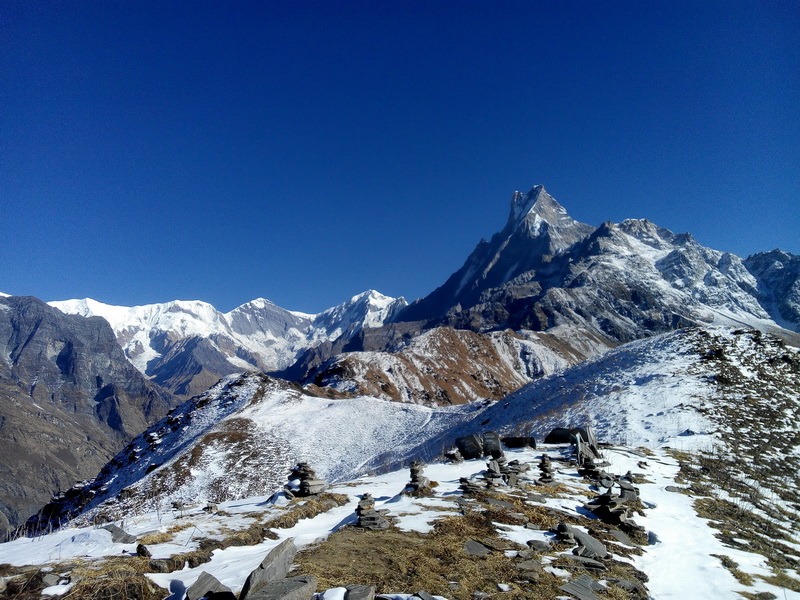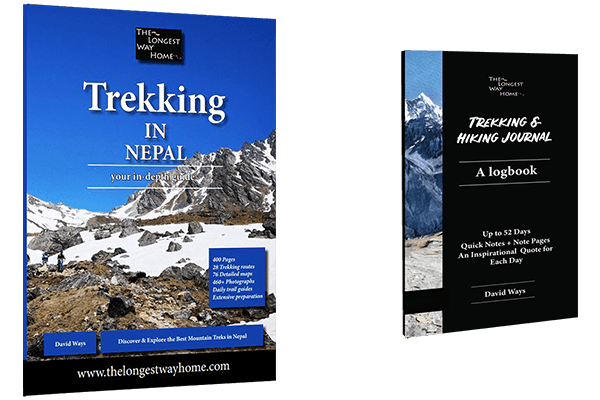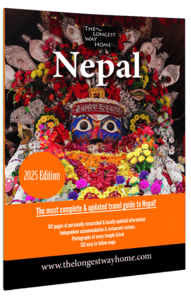

The World has Become More Expensive, and so has Nepal
In recent years, the entire world has grappled with rising living expenses, and Nepal has not been immune to this trend. However, the impact in Nepal has been delayed compared to other regions, offering insights into its unique economic landscape.
This trend, akin to what occurred globally, can be traced back to events like the Ukraine conflict following the onset of COVID-19. Escalating fuel and grain prices began to take hold. Interestingly, unlike the USA or Europe, Nepal’s immediate dependence on heating or fuel expenses was limited. Nepal primarily sources its transport fuel from India, which, in turn, obtains it at favourable rates from Russia. Meanwhile, rising grain prices had a more immediate effect on the cost of food.
One of Nepal’s standout strategies to counter the world’s surging inflation rates was its investment in hydroelectric power. Thanks to years of both international and domestic development efforts, electricity production became highly cost-effective within Nepal. In fact, it became so affordable that Nepal started exporting excess power to India.
The combination of Nepal’s geographical isolation and a somewhat passive administrative approach played to its advantage. While the rest of the world grappled with soaring heating and food expenses, Nepal’s steady supply of affordable electricity allowed it to weather the storm and maintain a relatively stable cost of living.

Nepal’s Rising Living Costs Impact Trekking Expenses
While certain trekking villages situated near hydroelectric plants enjoy remarkably affordable or even free electricity, there has been a notable decrease in the number of people benefiting from this privilege. In the wake of the COVID-19 pandemic, many trekking guides and individuals employed in the tourism sector departed Nepal to seek employment opportunities abroad. This migration triggered a significant shift in Nepal’s cost of living, particularly due to the scarcity of available labor.
Today, Nepal faces a severe shortage of manpower for essential activities like farming and manufacturing, as a considerable portion of its workforce has ventured overseas in pursuit of higher incomes. The money earned abroad is frequently sent back home, allowing families to sustain themselves without active local employment. Consequently, fewer people are motivated to work when financial support arrives from family members abroad.
The dwindling workforce, coupled with surplus income in select families, led to an uptick in local prices. Transporting food to trekking teahouses became more costly due to the labor shortage, prompting teahouses and villages to engage in competitive bidding for transportation services. This intensified the rise in transportation expenses. Moreover, the sight of wealthier families (whose members worked overseas) investing in their guesthouses and shops prompted other workers to raise their prices as well.
Before delving into specific price increases, it’s crucial to understand that most high-altitude areas receive their food supplies through the labor of porters and mules, a practice passed down through generations. As I’ve previously discussed in my trekking guides and guidebooks, food prices typically start low and gradually rise as altitude increases. This year, the situation was compounded by escalating fuel costs, affecting both vehicle fuel and cooking fuel.

Analyzing the Surge in Trekking Costs
Rising trekking costs have become a growing concern due to several factors, including a shortage of manual labor, soaring fuel expenses, and an upswing in the prices of raw food items, impacting various trekking destinations. As an illustration, Gorak Shep recently witnessed an uptick in menu rates. Presently, a plate of plain rice there costs USD $7 (700 rupees), while vegetable noodles or tomato pasta now command $7.50. Surprisingly, two boiled eggs are priced at $5, translating to $2.50 per egg, a significant contrast to Kathmandu, where a single egg costs only $0.23. Furthermore, a hot shower in Gorak Shep costs a hefty $12, with an interesting caveat – the water pressure often proves inadequate, making it a challenging proposition.
For travelers, the cost comparison between private cars and buses reveals substantial variations. For instance, hiring a private car from Kathmandu to Besishar comes at a price of $125, whereas a bus ride costs a mere $12. The journey from Kathmandu to Salleri demands a more significant expense of $300 for private transport. Notably, the round-trip flight from Kathmandu to Lukla has reached an astonishing $430, making it more economical to fly internationally to destinations like Kuala Lumpur than to undertake a domestic flight to Lukla. Speculation abounds regarding the high Lukla flight prices, with some suggesting it may be linked to the Solokhumbu region’s reluctance to comply with TAAN and NTB’s mandatory guide law, though this remains a matter of personal conjecture.
In addition to these factors, trekkers now contend with TAAN and NTB’s mandatory guide rule, along with a minimum daily guide salary set at $33 by TAAN. These developments have introduced new expenses into trekkers’ budgets when exploring Nepal. Consequently, if you’ve observed an increase in prices for your Everest treks this year, a significant portion of this rise can be attributed to elevated plane fares and the inclusion of transfer fees by agencies, stemming from the relocation of Lukla flights from Kathmandu to Ramechhap. To provide greater transparency, I now offer a price breakdown through my Find A Trekking Guide service, enabling you to understand precisely where your funds are allocated.

Examining Escalating Costs for Trekking Guides in Nepal
One intriguing aspect that often perplexes individuals seeking a guide for their Everest trek is the breakdown of expenses, particularly when it includes the guide’s airfare. It raises questions like, ‘Why should we pay for the guide’s flight when we’re already compensating them at a rate of $30 per day?’ The answer to this seemingly simple question lies in the logistics of how the guide accompanies you on the journey. Regardless of whether a guide resides in Lukla, Jiri, or even Kathmandu and serves multiple clients, they need to travel to meet you at the trek’s starting point. Therefore, covering the guide’s airfare is a practical necessity, and it’s worth noting that guides, along with locals, often benefit from significantly reduced airfares.
Another noteworthy development emerged in 2020 when teahouses began to raise meal costs for guides. Yes, guides do incur expenses for their meals while trekking, although at a lower rate than tourists. Nevertheless, it remains an expenditure they must account for to sustain themselves. In 2019, guides in the Solukhumbu region were also subjected to accommodation charges, although this practice has recently transitioned to an increase in food costs.
Trekking companies bear additional financial burdens, encompassing insurance for guides and porters, as well as the substantial paperwork requirements imposed by various government agencies annually. When you factor in that there are only two trekking seasons each year, the $30 per day fee for guides may begin to appear less substantial. It’s worth mentioning that guides hired directly by hotels often receive significantly lower compensation, endure challenging working conditions, and may even find themselves indebted to hotel managers. This darker aspect of the trekking industry may warrant exploration in a future discussion. For now, I strongly advise against hiring guides from your hotel, as it benefits both you and them by discouraging this questionable practice.

Something to consider: trekkers routinely stay in $50-100 hotels in Kathmandu, yet still seem to think a $33 per day (24 hours) trekking guide is too much!
Why Affordable Online Treks Persist Amidst Rising Prices
The persistence of remarkably low-priced treks available online raises a pertinent question. The answer is multifaceted, shedding light on crucial considerations for those evaluating trekking costs.
The Hidden Details: Modern online sales pitches by Nepalese trekking companies often conceal essential details in convoluted narratives.
One critical detail often obscured until the last moment is that trekkers may be joining a considerably larger group. Larger groups translate to reduced costs for the company. Trekking companies may not openly disclose this, and if they do, they might present it as a last-minute necessity due to an unforeseen issue, such as an unwell guide. Pressing the matter might result in a nominal reduction of $50 to $100 in your trekking cost, while simultaneously conveying that obtaining a replacement guide may take days.
The Helicopter Insurance Scheme: Shockingly, the helicopter insurance scam continues to persist and has even evolved into a more blatant form of profiteering. The modus operandi for inexpensive treks is straightforward: offer attractively priced treks online and attract participants with insurance coverage. A few days into the trek, a trekker might experience a minor ailment like an upset stomach (often caused due to bicarbonate of soda) or a headache. The trekking guide, in consultation with purported medical experts, may recommend a helicopter evacuation back to Kathmandu. This scheme allows the trekking guide, trekking agency, helicopter company, and hospital to collaborate and present exorbitant bills to insurance providers, which are subsequently paid out. The reality is as grim as it sounds, and it occurs on a weekly basis.
These are two of the primary reasons behind the persistence of seemingly too-good-to-be-true trekking prices online. I refer to these as ‘too good to be true’ prices and have been cautioning trekkers about them here and in my Nepal guidebooks for years. Unfortunately, in today’s fast-paced world, many individuals lack the time for thorough research or may unquestioningly accept the information presented on trekking company websites, leading them to fall for these offers season after season.

Effective Budgeting for a Trek in Nepal
Before embarking on your trek in Nepal, it’s crucial to conduct thorough research to ensure your budget aligns with your trekking aspirations. Start by assessing the specifics of your trek, taking into account both the duration of your trek and the overall time you’ll spend in Nepal.
For instance, if you plan to trek to Everest Base Camp (EBC) and have just 12 days in Nepal during the popular trekking season in October, you’ll need to make strategic choices. Flying to Lukla, the gateway to the EBC trek, typically occurs in the mornings, requiring you to factor in a 5-hour journey to Ramechhap from Kathmandu. Unless you arrive in Nepal at an opportune time, this tight schedule might necessitate additional expenses, such as private transport to Ramechhap or even considering a helicopter return.
Furthermore, allocating sufficient time for potential emergencies, like flight delays or cancellations, is crucial. Similar considerations apply to those with limited time seeking shorter treks, such as the 6-day Mardi Himal trek. Planning and budgeting should include the cost and time required to reach the trailhead, which may involve arranging private transportation, potentially costing you up to $300 but with an extra day or two left for actual trekking.

Conduct thorough research and exercise caution when reading about treks online. Avoid relying solely on trekking company websites, as they aim to promote their services and simply do not provide unbiased information. Instead, seek alternative sources for research.
Traveling with a companion can help reduce guide costs by splitting expenses in half. However, keep in mind that food and accommodation expenses typically remain the same. When assisting individuals in finding a local trekking company or guide, I emphasize transparency by providing a detailed breakdown of costs. This transparency fosters trust and clarity, helping trekkers understand that, in the Solukhumbu region, for example, daily expenses for food and accommodation can amount to $40-45, while in the Annapurna region, it ranges from $30-35. Budgeting wisely and being well-informed are essential for a successful trekking experience in Nepal these days.
Nepal remains budget-friendly, but moderate spending is now a more realistic approach to having a more enjoyable adventure in the mountains.
More on this website than can help you:
- How much does a trek in Nepal cost?
- Tips on preparing for a trek in Nepal
- List of treks in Nepal
- How to hire a trekking guide in Nepal
- Find a Trekking Guide in Nepal
- The Best Trekking in Nepal Guidebook
Looking for more insider tips and information like this? Get the most up-to-date, popular and dedicated guidebook to Trekking in Nepal in the world. Covering 28 full treks over 400 pages. The only trekking guidebook in the world with trekking links showing you how to link treks together! Available as an instant download or worldwide shipping for the paperback edition!
Take a look below and you’ll find out why this beats all other guidebooks!

Get the Digital Trekking in Nepal guidebook here!
Get the Paperback Trekking in Nepal Guidebook here!
Get the paperback Trekking & Hiking Journal here!
Looking for the whole country or the most popular treks? Get my full Nepal Guidebook (the only guidebook in the world today that includes entry prices for everything, full maps, and of course the best information).


The cost of $30 or even $40 per day for a guide is tiny when you compare that most people are spending $1000s on a flight. It says a lot about them when they think their hourly wage is too much for someones entire salary for the day!
It’s a small amount compared to many tourists home countries. But life is indeed cheaper in comparatively in Nepal and so the salaries are lower. Even with that, guides only get to really work for two seasons a year. I think what they are charging is about right these days. The cost of food and transport has gone up a lot in Nepal.
Thanks for such a detailed explanation on the the costs of trekking. I read your other articles about it too and now have a much better idea. Never knew about the group trekking pitfalls!! Thank you
Glad it helped you out!
How come food costs more on Everest Treks compared to Annapurna Treks?
The Annapurna Region has roads, so transporting food and fuel is cheaper – that’s the short answer. The Annapurna’s also has more agricultural land. The Solokhumbu regions is nearly completely dependent on tourism along the main routes. It doesn’t explain the high tourist flight prices to Lukla though which I mention in the article above.
Great info. You are right about these cheap online treks. I applied to be part of a group last year. There were 12 of us. It was not the best. People quarreled, walked at different paces, and by the end of it few of us were talking. The guide was ok, but way to excited every evening trying his best to get us to cheer up! The food was poor too. At the end of the trek I just asked why our food was not the same as others, and he said that was what the boss budgeted. If I were to do it again, I’d prefer to trek alone with a guide than as part of one of these cheap treks.
Sorry to hear about your experience on a group trek. Yes, they are often over crowded with too many people to one guide. It should be 5:1. Unfortunately nobody regulates these things in Nepal. The poor quality food is just one more way they make money on these types of cheap online group tours. They look all pretty online, but the reality when trekking is a poor experience.
This was really helpful to put into perspective. Once you add up food, accommodation and a guides salary you tend to just think of the lump sum. And not the breakdown as you put it. The cost of living has hit everywhere and things are that bit more expensive overall.
Indeed, when people see a 1,400 USD price for a trek that includes everything they see a lot of money for a couple of weeks. But when you look at the cost of a two week stay in Europe its relatively less. Break the prices down and into sections to reveal that the biggest cost is actually transport, permits (for some areas), and food. The guide is not the most expensive part of the trek! It’s getting to the stage where a trekkers daily food allowance is more than a guide’s salary!
We are budgeting our trek in November at the moment and this is so helpful. We went down the rabbit hole of spending time on your site and found it an amazingly helpful resource. Just bought your Trekking in Nepal book and are equally enthralled in the layout, it’s become a lot easier and clear to choose a trek now! Keep it up!
Really glad to know you found the website and my Trekking in Nepal guidebook https://www.thelongestwayhome.com/guidebooks/nepal/trekking-nepal-guidebook.html a help to you!
Eyeopening. I thought the helicopter scam was over but reading this I see and understand it’s still on going. I got a really cheap EBC trek and can confirm they wanted my travel insurance details almost immediately. Thankfully the booking company refunded my deposit. I just said the trekking company was more interested in explaining about what can go wrong on a trek than the actual trek. Is it too late for you to find me a guide? Arriving in Kathmandu in 10 days time!
Yes, the helicopter scam and insurance scam is still ongoing. I review all the trekking companies in my books carefully throughout the year and none of them are involved in it. Sadly I’ve seen some trekking companies I know who are engaging in this practice and it’s sad to see them go down this route. Moreover, it’s one of the reasons so many trekking companies change names, or create up to 5 names for their companies every year.
Regarding your own trek in days. Yes, it’s very short notice. But fill out this form on find a trekking guide and I’ll be able to help you out.
I love how you highlighted the local culture and traditions in your travel blog. It’s refreshing to read about experiences that go beyond the typical tourist attractions. Your insights make me want to immerse myself in the local charm and explore the hidden gems you’ve discovered.
Thank you for the kind words.